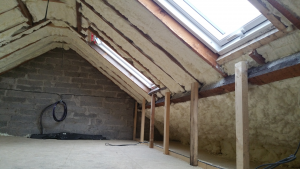Attic Spray Foam Insulation Bray
3 Bed Semi Attic Insulation Bray
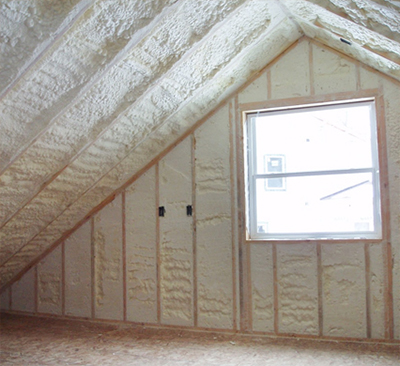
Attic Insulation Bray
Spray foam can be useful in many conditions. Spray foam can be used on roofs, windows and attics as well underfloor heating systems and interior and external walls.
Spray foam insulation will keep your home warm during winter and cool in summer. Spray foam insulation allows the house to breathe because it allows moisture-laden atmosphere to escape through its “Cell” structure.
Benefits of Spray Foam Insulation for your home
Other applications include agricultural farm houses and commercial andindustrial buildings, sheds and shipping containers.
It creates an airtight barrier around your home, keeping out rain and cold winds. It allows the heat from your home to escape, which is what most other insulating products today fail to do.
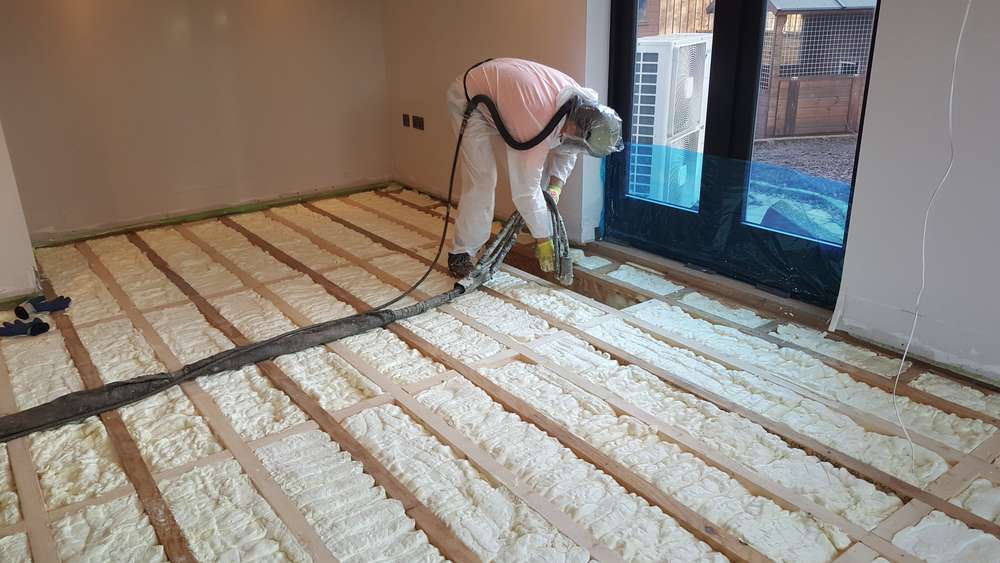
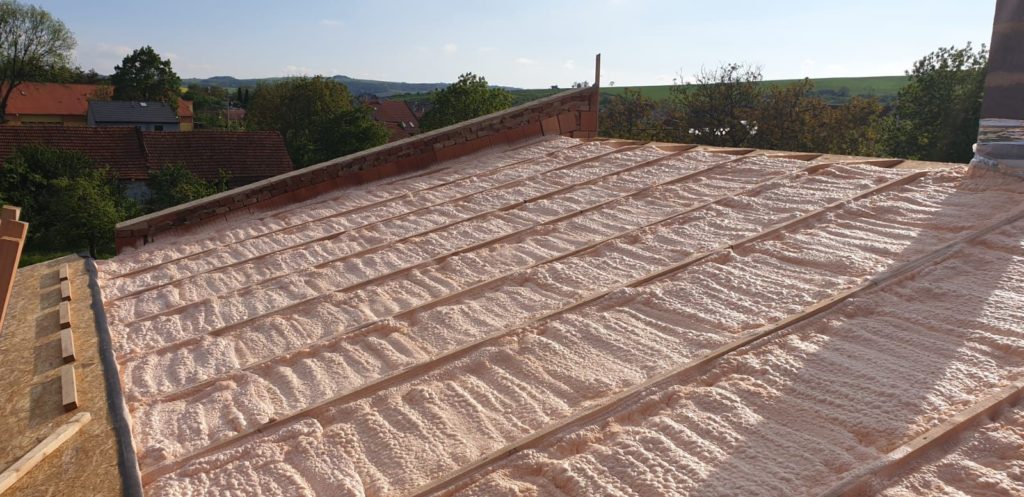
Cost Price Of Spray Foam Insulation
Spray foam insulation can be regarded as the most efficient insulation material. It has a higher U value than other insulating materials such as rock wool, fiberglass and cellulose.
Spray foam insulation also works well as an sound barrier. Spray foam insulation reduces outside noise significantly. This is especially advantageous for homes or companies that are located in densely populated cities or near airports.
Insulate Your Bray Property Properly
It is often used to reduce sound travel from one room to another or between floors within the walls. It’s especially effective on bathroom walls because noises from flushing toilets or showers can make it a nuisance.
It is very easy to use and doesn’t cause any disruption to everyday life.
It is possible to insulate a traditional Irish house in one day.
Encasing the pipes and insulation reduces noise coming from under-floor or in-wall piping.
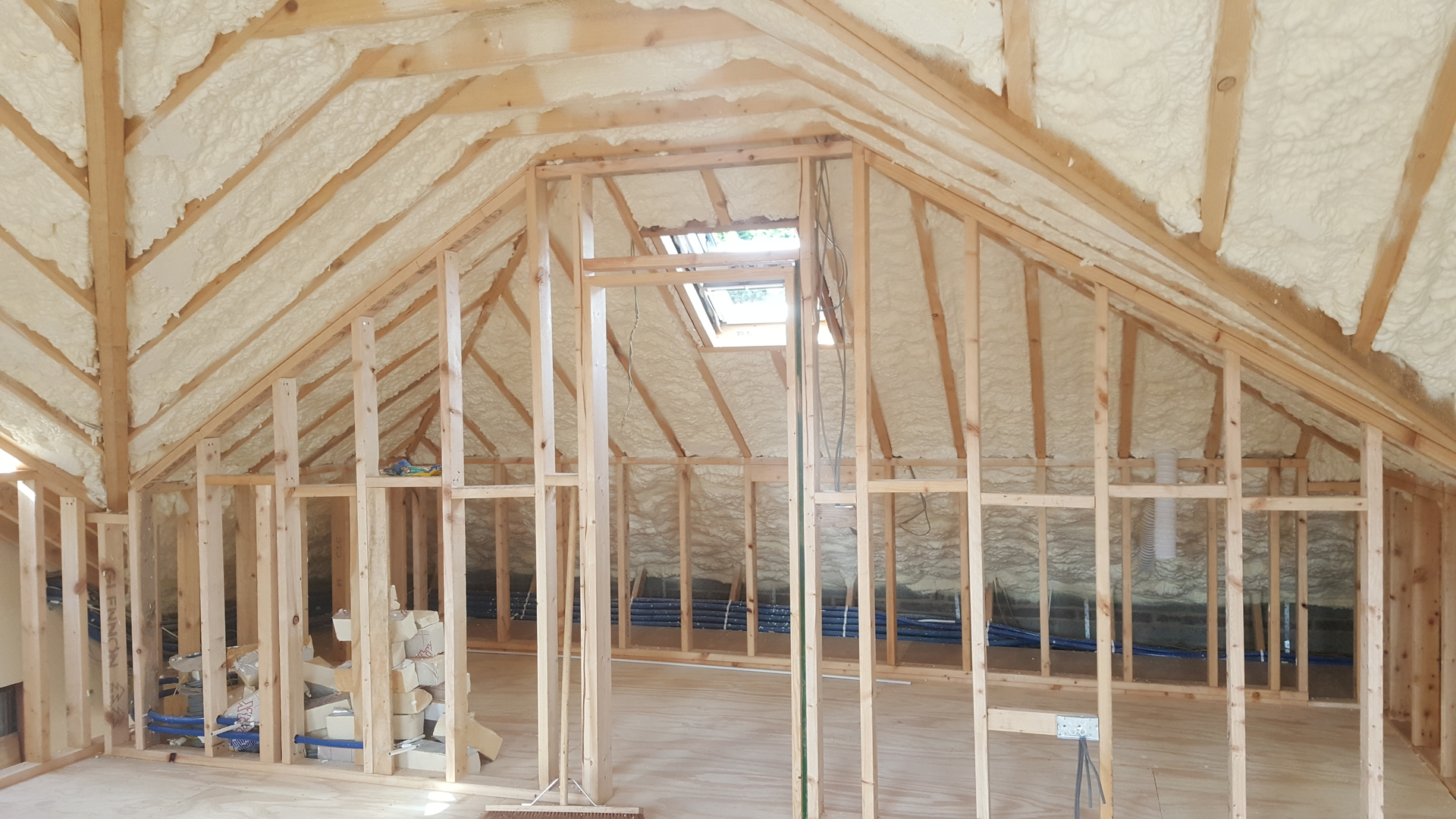
You will need to cover the joists with boards if you intend to store items in the attic or loft. It is not enough to insulate between the joints if you do not cover the entire area.
This material reduces the sound transference significantly when it is used within walls, attics or roofs, as well as floors, in comparison with fibreglass, rock wool, and polystyrene board. The dense composition of the material and the application process result in a completely airtight enclosure. It blocks sound from outside, including traffic, pedestrianised streets, and areas near airports.
It prevents sound from being generated within a structure from reaching floors above, below, or into adjacent spaces. Spray foam insulation would dramatically reduce the noises that are often generated in a structure.
Spray foam insulation that is both flexible, and filled with millions and millions of air bubbles will absorb the vibrations of the floor. The floor’s wooden members and floor will also be affected. Spray foam insulation reduces sound transmission by sealing any cracks or crevices that airborne noises can travel through.
Spray foam insulation can also dampen, if not completely eliminate, sounds from floors such as water moving through pipes. It surrounds pipes securely, preventing them rattling. It also eliminates the sound caused by hot water flowing through pipes. The heating system heats wooded Joists, causing them to expand, creak and groove.
It also keeps heat from escaping to upper floors, which causes lower floors to become colder, which in turn makes them require more heat to keep warm. The upper floors become too hot.
If the loft is accessible and free from damp or condensation, insulation should be simple. In many cases, you can do it yourself.
Uninsulated homes let 25% of their heat go through the roof. Insulating your roof, attic, and loft is a good way to reduce heat loss. It will also reduce your heating bill.
If it’s easy to access your loft and your joists are straight, you can use rolls mineral wool insulation. The insulation layer is placed between the joists (the horizontal beams that make the loft’s floor) and then another layer is applied at right angles to cover all the joists.
You can raise the floor to get sufficient insulation. Timber battens can be fitted across the joists. Alternatively, you can purchase purpose-built plastic legs to fit onto the joists and support your new floor. It is essential to allow ventilation between insulation and boards in order to prevent condensation.
Do not squash the mineral Wool when fitting the boards onto the top. This will cause it to lose its insulation properties.
Insulation stops heat loss from living spaces. By making your loft space cool, you can prevent damp or condensation from developing. Consider increasing ventilation if you’re installing loft insulation by yourself.
A second way to insulate your loft, is to install insulation between and over rafters. These sloping woods make up the roof. Either rigid insulation boards can be carefully cut to the required size or foam insulation can be sprayed between each rafter.
Some companies may offer to repair your roof with foam insulation. We don’t recommend this. Like any type of insulation you should ensure that your roof is in good repair before adding insulation.
If you are looking to use your loft as an indoor heating room, you can create a space in the roof.
You will need to insulate the loft walls and ceilings if you intend to use it as your living space.
To keep your home fresh, dry, and healthy, air must flow in and out. An experienced installer will not block or seal any intended ventilation. Do not cover any grilles, vents, or airbricks if you do DIY insulation.
If the loft is not easy to access, a professional can install blown insulation. This specialist will use special equipment that can blow insulation into difficult spaces. They might use treated cellulose, mineral wool fibre or polyurethane foam.
Flat roof insulation could help you save similar heating bills as loft insulation. The extent of the flat roof on your property will impact how much savings you receive.
If the loft is accessible and not covered by a flat roof or damp, you may be able to insulate the loft yourself. Professional installation is recommended for those with damp problems and more complicated insulation systems.
Cooler air could cause cold draughts to enter your loft hatch due to insulation. Fit an insulated roof hatch and place strips of draught-exclusion material at the hatch edges.
Insulating your groundfloor is a great way for your property to stay warm as well as lowering your energy bills.
Insulating a loft can be one of the best ways to lower your heating bills, save money on energy and keep your home warm during the winter. It doesn’t matter if you have insulation in place, but it is important to get the right amount to make it work.
Loft floor rolls – These are the classic option. They are laid along the loft’s floor. They are quicker to lay than insulated flooring boards. They come in both loose and encapsulated (blankets) rolls. These can be used to create base and top layers. To create a storage platform, they can be boarded using stilts.
These items and tips are not included in the article’s list. It is important to make sure that you have all the information you need before you start insulation your loft floor.
Even though insulation is often present in homes, some may not be effective. This could be due to insulation being compressed by storage boards placed over it or if it hasn’t been topped up in the long-term. Older properties may have a loft floor as low as 25mm deep.
Good news is that you don’t need to remove existing loft floor insulation. To achieve the recommended amount, you can just add one or several layers to it. This article will cover more details on the amount that is recommended.
The loft floor’s joist spacings will influence the width roll that you choose. This is due to the insulation being rolled between these beams. We recommend you select one that’s close to the spacing of your joists. This minimizes the need to trim.
The insulation must have the required thermal resistance. Another alternative is to measure the thickness of insulation if you only lay loft rolls. You can find more information in the section “How to calculate loft floor insulation thickness”
Areas We Service
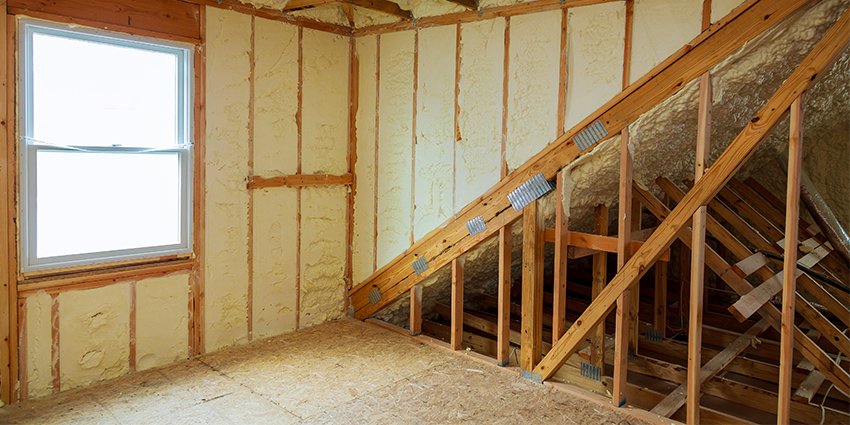

Parkhill, Dublin
01 5255297
